

Sam Hallas' Website
Avoncroft is one of a number of museums dedicated to preserving our built environment heritage - buildings to you and me. Historic buildings have been carefully dismantled and moved to the site near Bromsgrove. However, my interest was in the part it played in the former BT Connected Earth partnership. Avoncroft is home to the national collection of telephone kiosks and street pillars. On my visit in 2008, despite the March sunshine, there was still snow on the roof tops.
The museum has its own web site at http://www.avoncroft.org.uk/
All the images are clickable for a larger version. Use 'Back' to return here.

|
Beyond the main entrance is the first of the preserved buildings, a Cooperative store rescued from Shrewsbury. It still has goods in the window from the heyday of Coops. |
But that wasn't what I was looking for. Here's the sign to what I want just past the Coop. |
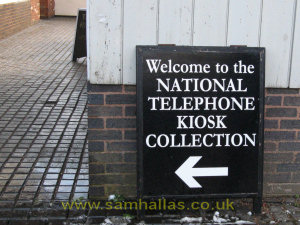 |
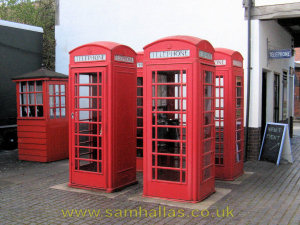 |
Immediately you pass through the passageway there is a group of the familiar Kiosks No 6 from 1936, with an odd little wooden kiosk tucked in behind. |
... I noticed that at least one had been fitted with decimal coin slots in its Button A, Button B cash box. |
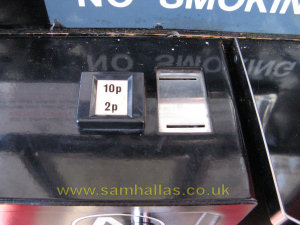 |
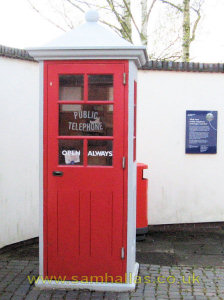 |
Just beyond is the first of the standardised kiosks, Kiosk No 1 from 1921 ... |
... with this interesting phone inside with its microphone on a stalk. |
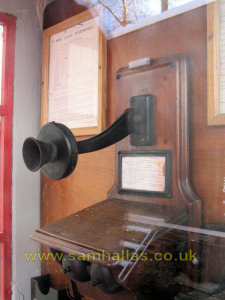 |
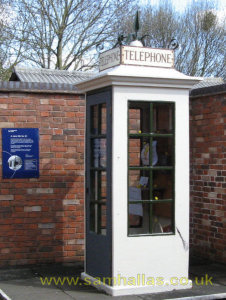 |
Around the corner is the main display area. The first to come into view is the modified Kiosk No 1 (Mk 236), from 1923. Note the ornate telephone sign with central finial. |
Within a few yards we've shifted forwards in time to 1968 when this model, the Kiosk No 8 appeared on the streets. In the background is one of the short-lived Mercury payphone shelters. |
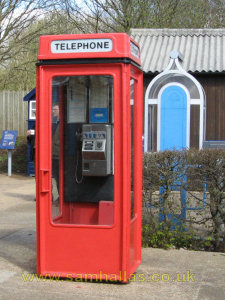 |
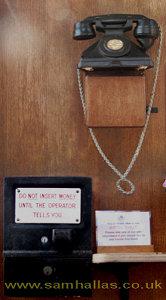 |
All of the kiosks are fitted with telephones. Here's another unusual one with a magneto telephone and post-payment coin box. |
Besides telephone kiosks, Avoncroft has a collection of other street telephones, such as these police pillars. The lamps on top flash when the telephone rings. |
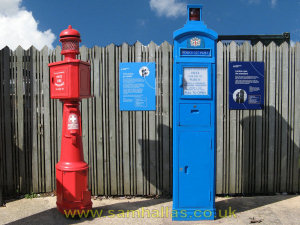 |
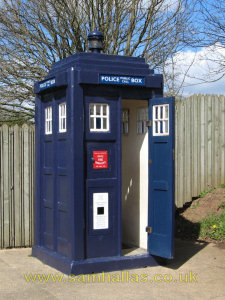 |
The police box is open so you can step inside and appreciate how cramped the accommodation is. When I was at school I remember seeing these boxes at various locations around town. Now virtually all gone from everywhere. |
As well as the traditional AA and RAC boxes, Avoncroft has this modern design from Gaitronics, the Sentinel, here painted in the AA's livery. |
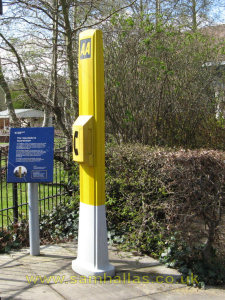 |
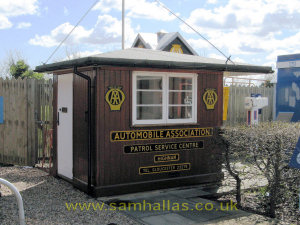 |
Not only that, but they have a complete AA roadside cabin. Inside is a Creed model 7 teleprinter which appeared to be in working order. |
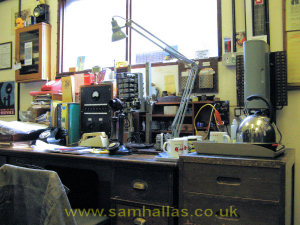 |
The exchanges are kept working by am enthusiastic team of volunteers with the help of this well-equipped test desk. Note the essential tools to the right - kettle and mugs. |
Collection: Avoncroft Buldings Museum. Pictures & text © 2008 Sam Hallas. Reference: Telephone Boxes, by Neil Johannessen, Shire Albums No 303, ISBN 0-7478-0250-5
 Museums Index
Museums Index